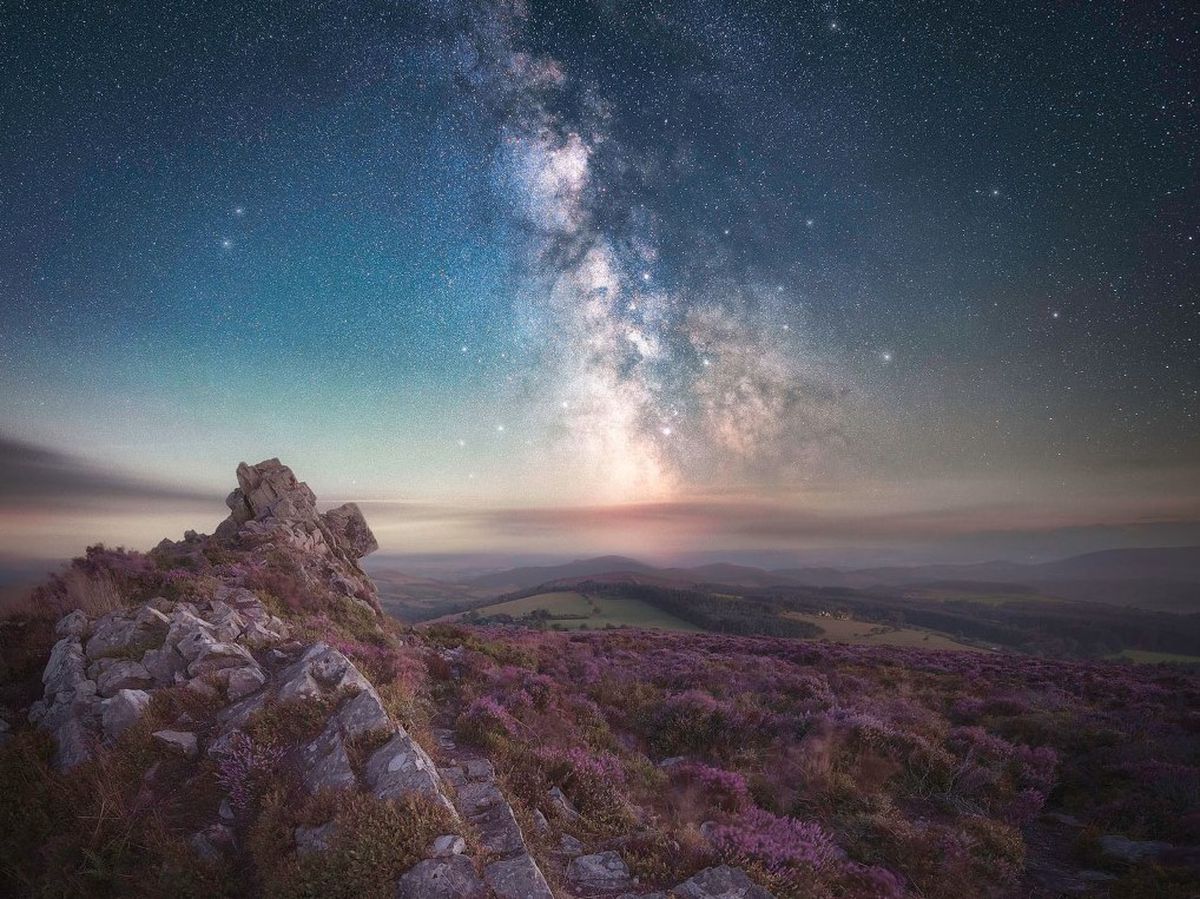[ad_1]

Luckily, you’re not far from some of the best seats in the astral house – at least in the view of one astrophotographer who’s been snapping our solar system from around the world.
Callum White, a Gloucestershire-based photographer who has been photographing from Malaysia, Nepal, East Timor, Indonesia and New Zealand, reckons Shropshire is one of the best inland parts of the UK when it comes to taking pictures of our solar system.
South Shropshire, with its wild hills and dramatic landscapes, is the county’s top spot for Callum.
Callum, who was commended in the Landscape Photographer of the Year competition earlier in 2022 and had one of his shots featured on the front cover of the competition’s collection, said: “I moved to Cheltenham in 2018 but Shropshire is only a very recent destination for me – I previously traveled to South Wales, Dorset or Devon for astrophotography but I was so impressed by the dark skies in Shropshire that it is probably top of my list now!”
-
But what is it about Shropshire that makes it so good for taking photos of the night sky?
“Shropshire is one of the best locations away from the coastline for stargazing or astrophotography. It has incredibly dark skies as long as you know which targets to avoid.
“The beauty of Shropshire is the number of treeless hilltop spots that are easily accessible for the public. Having 360-degree views of the sky is fantastic as you can observe or photograph a number of different targets in one evening – it also allows you to adjust if the clouds block one part of the night’s sky without needing to drive somewhere else.
“The Stiperstones Reserve (and many other locations) provides the added advantage of beautiful foregrounds, especially with the heather blooming in late summer. The Long Mynd is another very dark location if you’re after the best skies. Just outside of Church Stretton you have a couple of very easily accessible hilltop spots including Ragleth Hill if you are just starting out and want somewhere easy to get to.
“Another on my list to visit is Mitchell’s Fold Stone Circle, as this would be a lovely foreground under a starry sky.
“Really, you can’t go too far wrong for dark sky locations – the limiting factor is almost always going to be the weather, which will thwart many a stargazing adventure in Shropshire! When the forecast is clear though, you should head out and spend an hour or so under the stars.
“The biggest sources of light pollution [in south Shropshire] are Birmingham to the east, and Shrewsbury to the north. If you do a bit of planning and avoid targets in the sky facing those directions then you will be pleasantly surprised by how much you can see.”
-
What should budding astrophotographers be looking out for out in the dark skies?
“As an astrophotographer, Shropshire is a really good location for photographing the core of the Milky Way a little later in the season. The core starts off facing the southeast in March/April, before moving round to the south and then southwest in late July-September, so late summer is perfect.
“The core of the Milky Way is just one part of the night’s sky though – there are plenty of things to see all year round. At the moment the ‘Winter Hexagon’ or ‘Winter Circle’ of stars will look amazing as it is found due south at around 9pm in the evening.
“This is made up of six bright stars and is a nice alternative to photograph when the core is not an option.
“Winter is also a great time to see the spiral galaxy Andromeda – the closest to the Milky Way – and one you can just about see with the naked eye. This will be found in the western skies soon after it gets dark, making it a much more manageable target with a small telescope. Winter stargazing/astrophotography is much better for your sleep than in the summer!”
-
Is a regular camera enough to get stunning photos of the night sky, or should astrophotographers looking to get serious plump for more expensive equipment?
“Yes and no. You can get by with a normal camera and lens these days for landscape astrophotography (wide shots, rather than telephoto ones) and you’ll probably be quite pleased with the results – you need to be comfortable using the ‘manual’ mode and need to understand the ‘400 rule’ – this essentially tells you how long your shutter speed can be (focal length/400=max shutter speed) before you get stars trailing because of the spin of the earth.
“Once you start doing it more frequently though you’ll probably want to get more detailed or higher quality photos, and that is when you might look at a new lens with a very wide aperture (f2.8, f/1.8 or f1.4 are all very good) or even a star tracker, which rotates your camera at the same speed as the spin of the earth and therefore you can use longer exposures and capture more detail.”
-
How much can you plan ahead for astrophotography?
“I try to get out at least once every couple of months, but you are at the mercy of the moon and the weather. To be able to see the stars, Milky Way or constellations at their best, you need to focus on two or three days either side of the new moon – especially if you’re taking photos. A bright moon washes out the detail.
“Then you need to hope that in that window you have a clear night! Sometimes it can be months without an opportunity so you do need to be opportunistic – and I always keep an eye on the weather forecast around the new moon.”
[ad_2]
